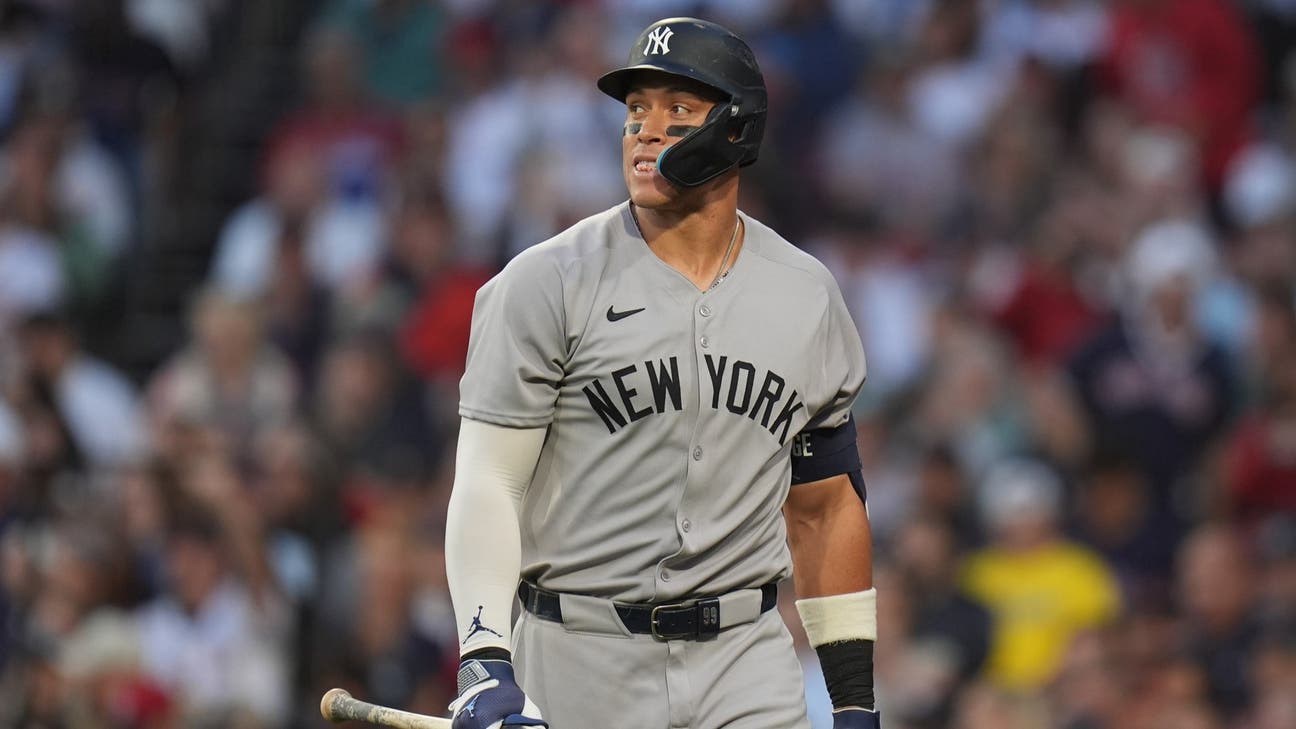Yankees Strategic Lineup Move

Yankees’ Strategic Lineup Move
The New York Yankees made a surprising decision by sitting two of their top hitters, Ben Rice and Jazz Chisholm Jr., in Game 1 against the Boston Red Sox. This gambit aimed to counter the Red Sox’s left-handed pitcher Garrett Crochet, whose pitching style has challenged the Yankees’ lefty bats this season. Despite their offensive prowess, Rice and Chisholm Jr. were held out to optimize matchups and increase the team's overall chances to succeed early in the playoffs.
Playoff Implications
Benching key players like Rice and Chisholm Jr. highlights the Yankees’ focus on strategic depth rather than pure star power. The move reflects confidence in the rest of the lineup to produce runs while minimizing the risk of early strikeouts or weak at-bats against Crochet. Such decisions often define playoff series, showing the Yankees' adaptability in high-pressure moments.
Looking Ahead
Jazz Chisholm Jr. is expected to return for Game 2, signaling a return to a more traditional lineup. This initial gamble, however, underscores the tactical chess match between Yankees and Red Sox as they vie for playoff dominance.
About the Organizations Mentioned
New York Yankees
The New York Yankees, established in 1903, are one of the most iconic and successful professional baseball teams in Major League Baseball (MLB) history. Based in the Bronx, New York City, the Yankees are renowned not only for their athletic achievements but also for their influential role in sports business and entertainment. The organization’s primary focus is professional baseball, competing in the American League East division. Over more than a century, the Yankees have built a legacy of excellence, securing a record 27 World Series championships—more than any other MLB team—alongside 40 American League pennants. This unparalleled success has fostered a global fan base and contributed to the team’s substantial brand value, often ranking among the most valuable sports franchises worldwide. Historically, the Yankees have been home to numerous legendary players, including Babe Ruth, Lou Gehrig, Joe DiMaggio, Mickey Mantle, and Derek Jeter. These figures have helped shape baseball’s cultural fabric, while the organization’s commitment to innovation in training, sports medicine, and data analytics has kept the team competitive in the modern era. From a business perspective, the Yankees exemplify a sophisticated sports enterprise. Their revenue streams extend beyond ticket sales to include merchandising, broadcasting rights, sponsorships, and real estate ventures. The organization’s state-of-the-art home, Yankee Stadium, opened in 2009, integrates advanced technology to enhance fan experience and operational efficiency, reflecting the team’s commitment to innovation. Currently, the Yankees continue to be a dominant force on the field and a leader in sports management. Their blend of tradition and forward-looking strategies makes them a compelling case study in how legacy sports franchises can thrive by embracing technology and business acumen while maintaining competitive excellence. This dynamic positions the New York Yankees as a benchmark in both sports and business innovation.
Boston Red Sox
## Overview The Boston Red Sox are a storied professional baseball team based in Boston, Massachusetts, competing as a member of Major League Baseball’s American League East division[1][2][4]. As one of the original eight franchises when the American League was established in 1901, the organization is not only a pillar of sports culture but also a significant business entity, with operations spanning ticket sales, merchandising, media, and sports entertainment[1][4]. The Red Sox are headquartered at 4 Jersey Street, adjacent to their iconic home, Fenway Park, the oldest active ballpark in Major League Baseball, which is itself a cultural landmark and a major tourist attraction[1][2]. ## History and Evolution Originally known as the Boston Americans, the team adopted its current name, inspired by their red socks, in 1908[2][3]. The franchise quickly became one of baseball’s most successful, securing five World Series titles between 1903 and 1918. However, the sale of Babe Ruth to the rival New York Yankees in 1920 marked the beginning of an 86-year championship drought, famously dubbed the “Curse of the Bambino”[2]. The Red Sox broke this curse in 2004 with a dramatic World Series victory, followed by championships in 2007, 2013, and 2018, reasserting their place among baseball’s elite[2][3]. ## Key Achievements and Notable Figures The Red Sox have a legacy of legendary players, including Ted Williams, Carl Yastrzemski, Jim Rice, and David Ortiz, each of whom has left an indelible mark on the franchise and the sport[2]. Fenway Park, with its Green Monster wall and intimate atmosphere, is not only a functional stadium but also a symbol of the team’s enduring appeal and innovation in fan experience[2]. ## Current Status and Business Operations Today, the Red Sox remain a major force








